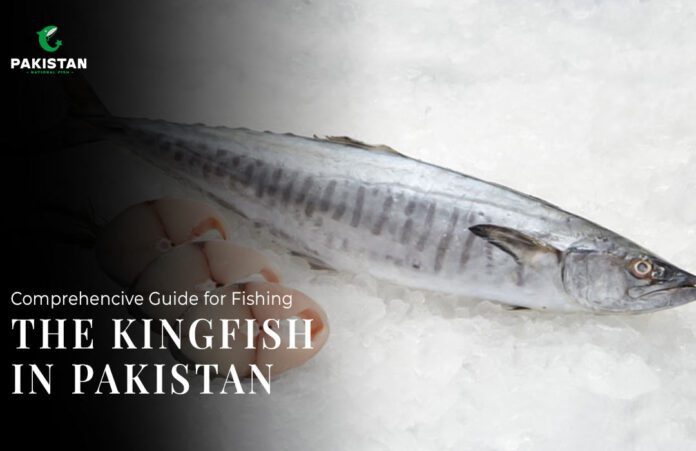King Mackerel, or Kingfish as they are generally known, are a popular and valued species for several reasons. First, look at the name: King Mackerel. That is definitely an indication!
This species is admired for its fierce, aggressive combat style, cool demeanour, and ability to bring meals to their babies. There are numerous benefits of Kingfish. Its location both inshore and offshore provides numerous chances for all types of fishermen to catch them. But it’s not that simple.
How To Identify A Kingfish
The Mackerel family contains numerous species, and it is simple to mix them up. Most have similar appearances and colours. However, it is not difficult to identify a King fish Pakistan. That is because the Kingfish is the largest member of the Mackerel family. These fish can grow up to 6 feet and weigh close to 100 pounds. The average catch is typically smaller, but if you’re lucky, you might land a record-breaker and get a good kingfish price in Pakistan.
1. Distinctive Color
Apart from its size, there are a few other characteristics of Kingfish that will help you identify them. They are primarily grey, with a small amount of bluish-green on their backs. They lack the markings found in most Mackerel species and instead have a relatively small stripe-like look.
2. Anatomical Features
The lateral line decreases once you reach the second dorsal fin, and unlike other Mackerel species, the front one lacks a dark splotch. They have rigid fins and a big back tail. They also have small, but sharp, pointy teeth.
3. Sharp Teeth
One of the most distinguishing characteristics of the King Mackerel is its teeth. They have tiny but extremely sharp and pointy teeth that serve to efficiently slice through their prey. These teeth are not only sharp but also extremely strong, allowing the Kingfish to effortlessly rip through the flesh of smaller fish, squid, and other marine animals that make up its diet.
Tips And Tricks For Catching The Kingfish
Catching Kingfish can be an exciting experience for the fishermen. Here are some tips and tricks to increase the chances of catching the Kingfish:
1. Trolling
Trolling is the most widely used way of fishing in Pakistan. This entails leaving your bait out behind the boat, typically 32 feet or more. Trolling allows you to cast several lines to cover greater ground. You can use both live and dead bait, although hooks are the most standard.
2. Rod, Reel, And Hook
You can also attempt Kingfish fishing the old-fashioned way, using a rod, reel, and hook. Try bait both onshore and offshore, and consider adding a sinker if the current is high.
3. Using Chum And Handling Bites
Even if the location appears to be busy, you can add some chum before dropping the line. In addition, if the fish lets go of the line, wait a second before bringing your bait back in, as they can bite again.
Equipment And Arrangements For Kingfish Fishing
Preparing for kingfish fishing requires the right equipment and arrangements to maximize the chances of success and ensure a safe and enjoyable experience.
1. Strong But Manageable Gear
Kingfish are powerful and fierce fighters, as you are now aware, thus you need equipment that can withstand their attacks. Fortunately, you don’t need to spend a lot of money on gear because, despite their durability, they aren’t giant fish like marlin or tuna. A solid, dependable arrangement works well.
2. Ideal Arrangement
A medium-action rod, a 4000 spinning reel, a 20 lb braid, a 40 lb fluorocarbon leader, and a 3/0 hook are the ideal fishing equipment for king mackerel. If there’s a lot of structure in the vicinity or if you’re targeting large Kingfish, you may always increase the size of your line, leader, and hook.
Additionally, some anglers advise utilising wire leaders because if you place your leader in the wrong area, the fish’s razor-sharp teeth could cut through it.
3. Customized Setup
What we discussed earlier is a basic King Mackerel fishing setup, so proceed with caution. You may always adjust it to suit your tastes or the environment you’re in. Actually, doing so is highly recommended!
Conclusion
Whether inshore or offshore, kingfishing in Pakistan is an exciting activity that requires specialised knowledge, gear, and methods. The largest member of the Mackerel family, kingfish are identified by their size, unique colouring, stiff fins, and pointed teeth. Success can be increased by trolling, utilising powerful yet manageable equipment (such as a medium-action rod with a 4000 spinning reel), and being ready with chum. Tailor your setup to your preferences and the available conditions to ensure a flexible and resilient response to this thrilling fishing challenge.


